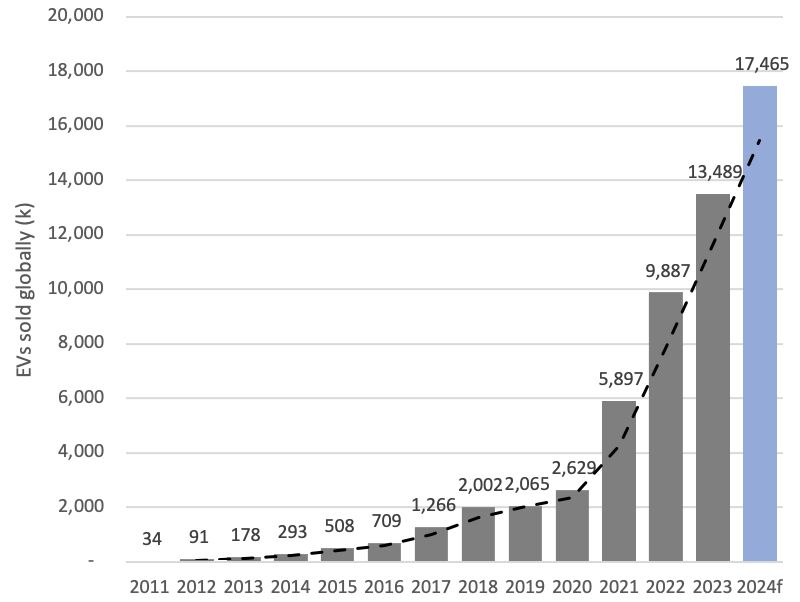We forecast 2024 EV sales for China, the US, and Europe (collectively, making up ~63% of global vehicles sold) to be ~17m units; up 29% over the pcp.
Critically, what this diagram does not show is that the vast majority of this growth is, in fact, via hybrids, not battery electric vehicle (BEVs). Confirming our narrative that we have maintained over the past three and a half years, given the free-cashflow shortcomings of every pure BEV manufacturer (with the possible exception of Tesla and BYD), if an EV maker cannot produce or source an ICE to supplement and create a hybrid product range, it will struggle to become economically viable in the long-run. Particularly, as it appears that BEV sales in Europe and China may have peaked.
Why is this important? If we take a snap-shot in time, it takes approximately eight hybrid vehicles to equal the lithium equivalence of a single in-situ BEV. This type of analysis can also be applied to future Nd/Pr, Cu, graphite and oil demand profiles. Depending on which different EV scenario one assumes (using current capacity averages), there can up to a 640% quantity difference in the underlying commodity demanded.

